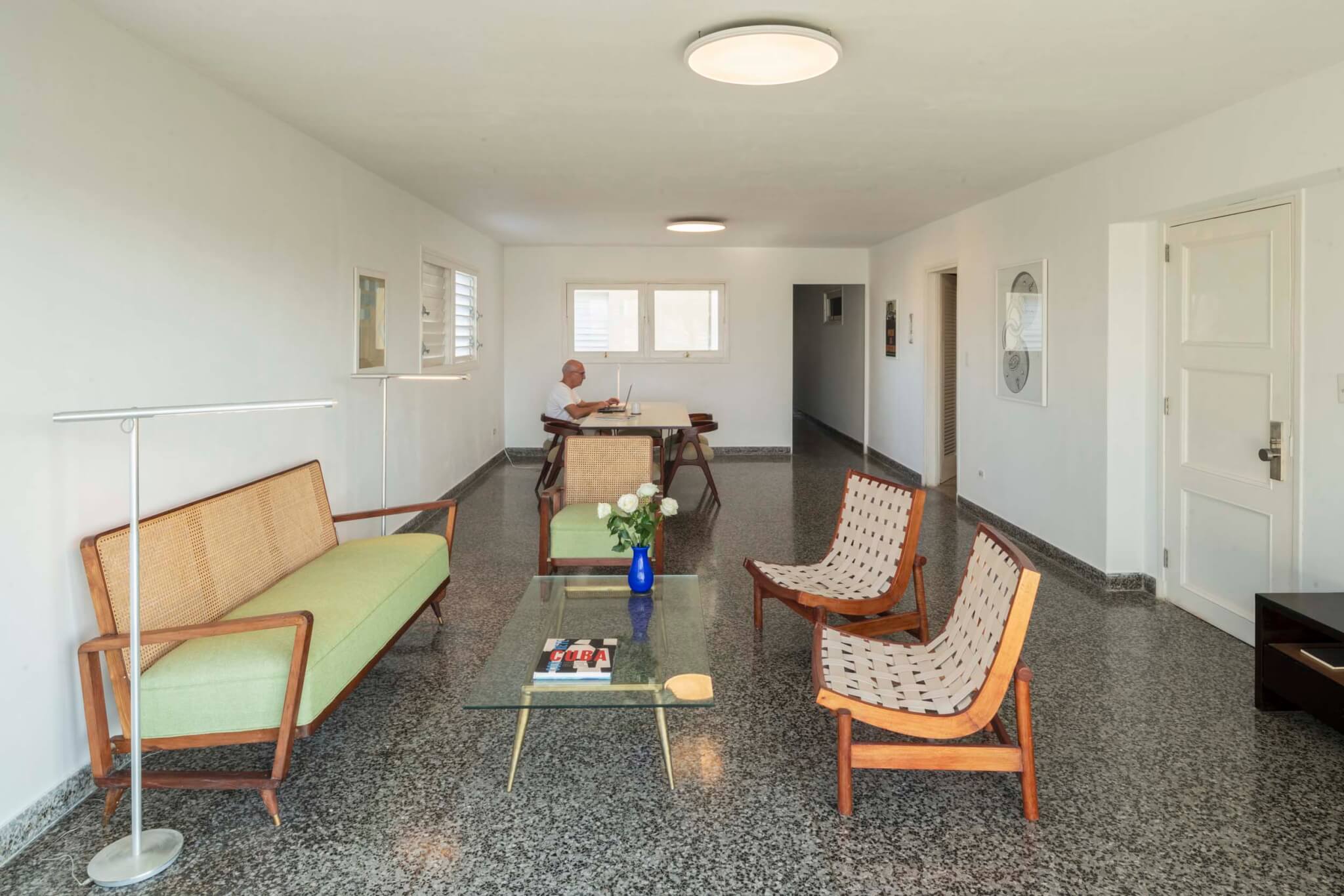New York–based architect Belmont “Monty” Freeman recently completed an apartment for himself in Havana’s leafy Vedado neighborhood, where his mother’s family lived for generations and where he, the son of an American father and Cuban mother, visited as a child. The area is largely comprised of early-20th-century villas and mansions (many now embassies and government offices) and apartment buildings that predate the country’s 1959 revolution. Freeman’s residence is in a 9-story building designed in 1958 by Maria Elena Cabarrocas, a member of a distinguished family of architects and one of several women with prolific practices in Cuba in the 1950s.
The project fulfilled a dream Freeman has had since he visited Cuba as an adult in 1998, making him the first person in his family to return to the island since the revolution. He wanted to reestablish a home in Havana that could serve as a venue for family gatherings and for his own academic and professional activities. (Freeman, who has taught at Columbia GSAPP and the University of Pennsylvania, regularly takes students and other groups to Cuba for architectural tours.)

The architect achieved his sleek renovation of the three-bedroom apartment in what, by current local standards, is considered record time. In Cuba, the problem is not a lack skilled labor but a shortage of materials, so Freeman brought in light fixtures, plumbing parts, and more during regular visits to the island starting in 2019. Delayed by the COVID-19 pandemic, work resumed in 2021 and was completed last year with assistance by Terior Estudio, an architecture collective founded in 2020.

Now furnished with a combination of vintage 1950s pieces and furniture that Freeman designed and had fabricated locally, the result is a minimalist interpretation of mid-century modernism.
A Meeting of the Minds
A tertulia is a salon or a social gathering with literary or artistic overtones, especially in Iberia or in Spanish America. On January 9, 2024, Freeman hosted one at his apartment, which I attended. About 35 people—from young architecture students to seasoned designers, historians, writers, and thinkers—gathered to join in conversation.
Although Cubans gather regularly for social and cultural events, this one was unusual due to the group’s age range and disciplines and because it was held in a private residence rather than an institutional setting. The event was suggested by Yoandy Rizo, founding partner of Terior Estudio and protegé of architect Ricardo Porro, and Fernando Martirena and Anadis Gonzalez, principals of the young collective Infraestudio. The guests were eager for emerging architects to see Freeman’s renovated apartment as an example of what can be done with Havana’s remarkable stock of modern buildings.

Architecture students and young practitioners are hungry for this type of discourse because many feel they have limited career options in Cuba: There are low-paying government jobs at ministries like Tourism, where they often just administer the work of foreign architects. If they are luckier, there is the city historian’s office, which largely focuses on the preservation of colonial buildings. A riskier route is independent work, the path taken by Terior Estudio and Infraestudio. Or, they can emigrate.
Private enterprises became allowed, with a government-issued license, in Cuba in the early 2000s. This licensure excluded certain professions, including architecture, because they were considered “essential” to the state. Because of this, many practitioners are surreptitiously licensed as “interior designers” or “artists.”
At the event, Freeman presented his work and influences including renovations of modernist icons like Philip Johnson’s Four Seasons restaurant in the Seagram Building and the Zilkha Art Gallery at Wesleyan University designed by Kevin Roche. He showed his own building projects and reflected on studying under Cuban architect Mario Romañach at the University of Pennsylvania, who was the department chair when Freeman was in graduate school. Romañach is one of the architects, along with Cabarrocas, who had been largely written out of Cuban history books on account of their leaving the island after the revolution. Their reputations have recently been resurrected by the likes of Eduardo Luis Rodríguez, the architect/architectural historian who has promoted 20th century Cuban architecture. Rodríguez attended the gathering, as did many young architects who live among the work of these midcentury architects, even if they didn’t know it until now. The young architects, amazed at these personal connections and closeness to Cuba’s architectural history, expressed a desire for more tertulias.
Susan Morris works across media—film, television, radio, exhibitions, public programs, print, digital media—specializing in the arts and culture with a special emphasis on architecture and design.

